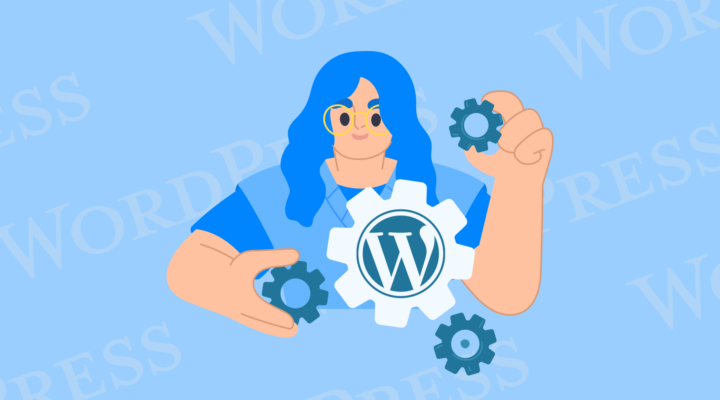1. Non-unique content and design
One of the most common issues found on many affiliate websites is using templates without caring about the site’s uniqueness. To attract more traffic, one needs to add extra value to the template and make the page relevant to the target readers. Ensure that your page has unique text and visuals. Do not rely only on widgets or search forms, although these are crucial for conversion.
2. Empty meta descriptions
Meta descriptions are a must-have for any page. It’s better to fill these fields in by yourself than to let Google choose the text for you. However, before you spend too much time creating the “perfect description”, start by writing a simple template with the main keywords for your page, the unique advantages of your website, and some common elements. Then, you can use this template to quickly generate meta descriptions for other pages.
While meta descriptions might not have a major effect on your SERP ranking, they still have some influence and provide you with another place to put your keywords. This may lead to a better call-through rate and improved behavioral factors while providing you with higher profits and better rankings at the end of the day.
3. Lack of alt attributes for images
Don’t forget to write out attributes and titles for each of your images, as it’s important for both showing up in the search results and if you have readers with disabilities. Image search on Google has the potential to attract many visitors to your website. Travel blogs usually have many pictures and visualizations. When people search for new destinations, they often search Google for pictures. Don’t miss out on this chance to reach the top of the SERP rankings with your photos. You can check images for alt attributes, titles, size, and response code in the Netpeak Spider crawler.
4. Irrelevant or insufficient backlinks
Instead of gathering as many links as possible, hunt only for links from relevant content. While many SEO experts argue about the effect that backlinks have on a site’s ranking, they still serve as a marker of trustworthiness to Google. For example, rubbish links that don’t give any value may have a negative impact on your position in the SERP. Many sites get penalized by Google because of their unfair play with backlinks. To avoid any potential problems, try to build a backlink profile in an organic way.
Here is what you can do. Analyze the top 30 to 50 websites in the SERP for your target keywords and determine how you can provide more value than the content on those sites. Send out cold emails to these bloggers and offer to improve their blog posts for them. You can even create new pieces of content for them and add links to your website within that content. These actions will not only give you backlinks but may also drive relevant traffic to your project.
5. Incomprehensive content
As the situation in the travel market is fluid right now, it’s important to think about the perspective and make a roadmap for your project in order to prepare for any possible changes. Try to make your content more comprehensive, for instance, by adding more things people can do in each destination, such as attractions, restaurants, etc., covering their whole experience. This will give you more opportunities to insert keywords and affiliate links. However, if you are not ready to invest in SEO at this stage, consider working with paid traffic via Google and Facebook.
Check your Google Analytics and monitor your bounce rate, which shows you how long visitors stay on your website and how deep they delve into the content. Internal linking will help attract users for longer periods of time, so try to link relevant posts to one another. The longer a user interacts with your site, the better effect it has on your position in the SERP. However, keep in mind that too many internal links might mess up your analytics and internal structure.
6. Indexing issues
Some websites with brilliant content and great functionality don’t attract traffic. Often minor mistakes are to blame, for example, a forgotten “disallow” rule or a mistake in robots.txt files. To remedy this issue, double-check your indexing and crawling instructions every time you make any changes to ensure robots can still crawl your website.
If you want to prevent a specific page from being indexed, a rule in robots.txt file won’t be enough. For example, in the case of development stage subdomains, you may use basic authentication to prevent robots from accessing that area.
For www versions and insecure connections like http, always set up a redirect to the main mirror. This will prevent many problems, such as when someone makes a typo and wants to open another version of a website or when you have a troublesome backlink and have no way to contact the other webmaster to fix this problematic link.
If you wish to delete some old pages from the index, it is better to use 410 code instead of 404 code. Search engines will eventually exclude these pages from search, while 404s may be there for a long time. Set up a redirect to your main mirrors from other pages, especially those with insecure connections. Plugins like Yoast can help you stay on top of all the technicalities.
In summary, don’t do anything to pages you want to rank, particularly don’t disallow or no-index them. For pages you want to hide from indexing, such as development subdomains, use basic authentication. For pages you want to delete from search, use 410 code. If you have multiple mirrors, redirect all users from other mirrors to the main one. Solving the problem with different mirrors will also help you better analyze your traffic and make decisions based on that data.
7. Lack of keywords
To create a powerful content plan, analyze your competitors by looking into their monthly traffic, top pages in terms of traffic, and high-ranking keywords, including paid keywords, as well as their difficulty, volume, position in the SERP, etc. Tools like Serpstat allow you to run competitor analysis, discover their highest-ranking keywords, see variations of those keywords, and learn how to use them in your own content. For example, Serpstat’s search questions report shows what your target audience wants to know. These are basically ready-to-use ideas for your blog posts, as well as titles and subheadings.
8. Missing backend architecture
Include backend architecture to create category pages based on your filter parameters. To define categories, start with keyword research. If a category has clusters with many keywords and high search frequency, it’s a good sign to create a webpage with a human-friendly URL. This will support your credibility and improve your page rankings. It’s better to start with keyword research and then create pages only for categories that can potentially drive traffic.
Make sure to visit the website yourself from time to time and check whether there are any problems. Even slight layout issues may confuse readers, which is important since behavioral factors influence your rankings.
9. Growing wrong pages
If you have a website with traffic, focus on pages that are close to the top and do as much as possible to grow them. With Serpstat, you can analyze your top pages and see your distribution of keywords between pages. You may see that some URLs are very close to the top and require minimal effort to make the changes necessary to push them to Google’s first page.
Try to get as many internal links as possible from other webpages that lead to your top-performing posts. Use your highest-ranking keywords as anchors. You can also try to get backlinks with these anchors that lead to the pages you want to grow.
10. Ignoring domain authority
Essentially, to increase your domain authority, you need to make sure your website is fast, easy to use, and features engaging content that answers users’ requests. Here are a few more tips:
- Disable unnecessary WordPress plugins, which many people like to add to their websites (or at least update old plugins).
- Optimize your images, by tinifying them or using cloud delivery networks like Cloudflare or CloudFront from Amazon. Such networks will save your images on different servers around the world, so when somebody requests a certain image, they’ll get it from their nearest server.
- Optimize your scripts. It is highly beneficial to reduce the number of loading scripts at the beginning of your website. Let them load after the main content appears.
- Create a content hub that will link to your long reads.
To find the best approach, test different strategies and see which works best for your project and niche.
11. Using subdomains instead of folders
To choose between different language versions or a website/subdomain for each language, perform keyword research. This will help you determine if your keywords have high search frequency in another language. If so, launch a new site version in this language. Start by creating two to three landing pages and, if this works well to generate you more traffic, extend this project.
When choosing between subdomains and folders, it is better to go with the second option. Thus, link weight will be attributed to the same website, and you’ll grow the link weight of the entire website instead of sharing with different subdomains. Furthermore, growing a subdomain requires a lot of effort, but if you have enough resources for creating content and link building, opt for that approach. Remember to check with niche leaders and see how they solve the same problem. For instance, Apple has different folders for different language versions on its website. This is a strong solution.
When creating an affiliate website, it’s important to pay attention to various SEO matters to ensure that your site shows up in the search results. Thus, it’s crucial to write unique and comprehensive content and fill it with relevant keywords. Meta descriptions, alt attributes for images and backend architecture are also important elements of website optimization. Also, remember that only backlinks from relevant and trustworthy platforms are useful for promotion.




